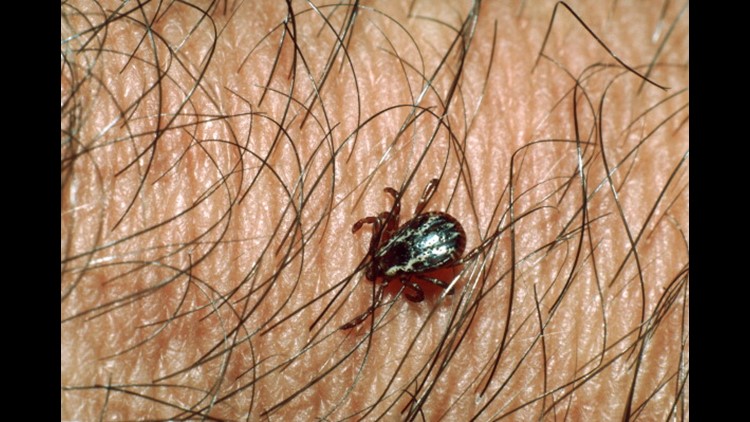Tick season is officially here.
A recent population boom of white-footed mice has led to an increase in ticks in the Northeast, which feed on mice blood and can acquire the bacteria that cause Lyme disease. In areas where ticks are rampant, like in the Northeast, upper Midwest and Mid-Atlantic, it's important to be on the lookout for ticks and know how to treat a tick bite.
If you've been told ticks jump off of trees and onto your body, and that the best way to remove a tick is burning it off, it's time to read up.
When it comes to ticks, there are many common myths about how to treat tick bites and remove them. We talked to Durland Fish, a Yale school of health professor of epidemiology and Kevin R. Macaluso, professor at the Louisiana State University school of veterinary medicine, about debunking tick myths.
Myth: The only way to remove a tick from the skin by burning it.
While burning a tick off the skin may seem like a satisfying and fool-proof way to get the blood-sucker off, it's also the worst way to remove it, according to Macaluso.
He notes that burning it may actually increase the risk of getting a tick-borne disease.
"Applying heat can increase [the tick's] saliva production and if its infected with something increase pathogen transmission," Macaluso said.
Beyond burning yourself, or starting a fire, you may just end up with a scorched tick attached to your skin, Fish said.
"It’s mouth parts are shaped like an anchor with backward point spines, so until that tick decides it wants to release itself it’s physically attached," he said.
Fish said the best way to remove a tick is to use tweezers and grab the tick as close to the skin as possible and pull straight out.
If you're worried about Lyme disease or another tick-related illness you can save the tick and ask your doctor to test it. Just put it in a bag in the freezer.
Myth: You can feel a tick bite you.
While a very small group of people may be able to feel a tick bite, the vast majority aren't aware they've been bitten.
Macaluso said ticks secrete compounds that make humans or animals they are attached to unaware they are being bitten or fed on.
"[Ticks are] are secreting factors into the skin at the bite site that inhibit the host's initial response, so you don't feel it," he said.
He said ticks need to feed for 5-10 days on some hosts, so it's not surprised they've "evolved to develop strategies to avoid that itch sensation or knowing that a tick" is attached to the skin.
Myth: Ticks smell your blood like vampires and come towards you.
Ticks don't smell blood, Kevin said.
"They sense carbon dioxide, respiration when you are breathing, and can sense heat and movement," he said. "That is basically how they track a host; it's not blood per say."
Myth: Ticks jump out of trees and onto you.
False.
"Ticks can't jump, they don't even have the biomechanics to jump," Kevin said. "Tips crawl from your leg area, so when you get a tick on different parts of your body, it's because they crawled there."
Myth: Lyme disease is the only tick-related disease you have to worry about.
False. Different species of ticks carry different types of diseases, and Lyme disease isn't the only disease to worry about, according to Fish.
"There are other [tick-related disease] that are more serious," Fish said.
He points to several other tick-related diseases:
Ehrlichiosis is a bacterial illness, typically transmitted by the Lone Star tick, which is widely distributed.
Rocky Mountain spotted fever is a tick-borne illness caused by the bacteria Rickettsia rickettsii. It's potentially fatal in humans and is transmitted in the U.S. by bites from the American dog tick, Rocky Mountain wood tick, and brown dog tick, according to the Centers for Disease Control and Prevention.
Powassan is a potentially fatal virus transmitted by tick bites. Powassan can be fatal, and some of those who survive may have long-term neurological damage, Fish said. There are no treatments for Powassan.
When it comes to Lyme disease and all tick-related bites, Fish notes that people should be vigilant about checking their bodies for ticks and if one is found remove it quickly.
Ticks must be attached to humans for 36 to 48 hours or more before the Lyme bacteria can be transmitted, he said.
"The sooner you remove the tick the less likely it is you are going to get Lyme disease," he said. "Most people will usually find [the tick] the first day or two but, not always because very good at feeding without you noticing."
Follow Mary Bowerman on Twitter: @MaryBowerman



